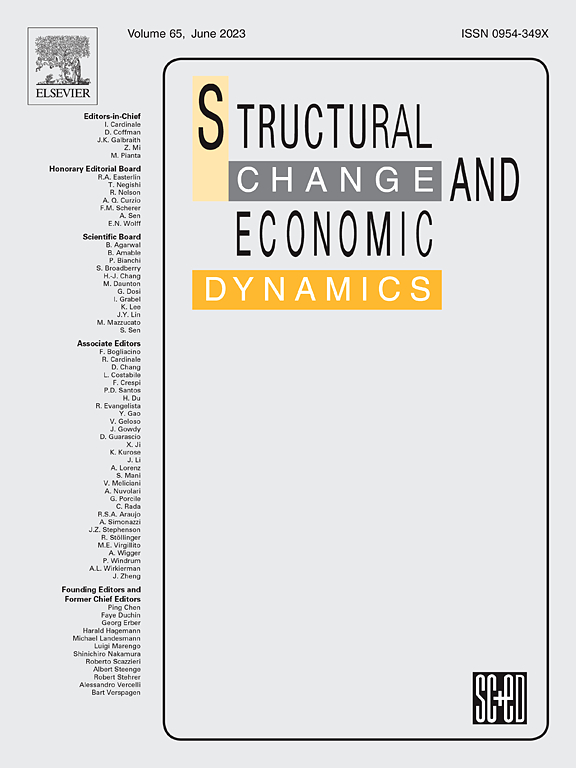与 Covid-19 有关的结构变化、收入分配和失业:基于代理的模型
IF 5
2区 经济学
Q1 ECONOMICS
引用次数: 0
摘要
我们在基于库存流量一致主体的模型框架内研究了Covid-19大流行的分布后果,该模型捕捉了与大流行相关的封锁的某些方面。该模型区分了“必要”和“非必要”行业,区分了可以在家完成的工作和必须在现场完成的工作。我们发现,大流行导致不平等现象显著加剧,这主要是由于市场集中度和企业在大流行之后提高了加价,从而导致价格上涨和利润份额上升。政府资助的短期工作计划和贷款担保减少了企业清算和收入不平等的增加(“凯恩斯主义”结果)。然而,我们也发现,在危机之后,政府政策的缺失导致了更高水平的生产率和GDP,因为这意味着更多生产率较低的公司在封锁期间面临清算(“熊彼特”结果)。本文章由计算机程序翻译,如有差异,请以英文原文为准。
Structural change, income distribution and unemployment related to Covid-19: An agent-based model
We study the distributional consequences of the Covid-19 pandemic within the framework of a stock-flow consistent agent-based model that captures some of the aspects of pandemic-related lockdowns. The model distinguishes between ‘essential’ and ‘non-essential’ industries, between jobs that can be done from home and jobs that must be carried out on site. We find that the pandemic leads to a significant increase in inequality, mostly driven by market concentration and firms raising mark-ups in the aftermath of the pandemic, contributing to higher prices and a rising profit share. Government-financed short-time working schemes and loan guarantees reduce the rise in firm liquidations and income inequality (the ‘Keynesian’ result). However, we also find that the absence of government policies leads to higher levels of productivity and GDP in the aftermath of the crisis, as it means that more of the less productive firms face liquidation during lockdowns (the ‘Schumpeterian’ result).
求助全文
通过发布文献求助,成功后即可免费获取论文全文。
去求助
来源期刊

Structural Change and Economic Dynamics
ECONOMICS-
CiteScore
9.60
自引率
4.90%
发文量
159
期刊介绍:
Structural Change and Economic Dynamics publishes articles about theoretical, applied and methodological aspects of structural change in economic systems. The journal publishes work analysing dynamics and structural breaks in economic, technological, behavioural and institutional patterns.
 求助内容:
求助内容: 应助结果提醒方式:
应助结果提醒方式:


